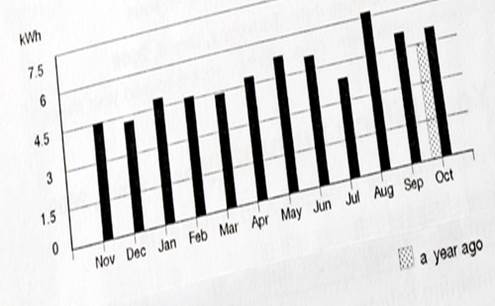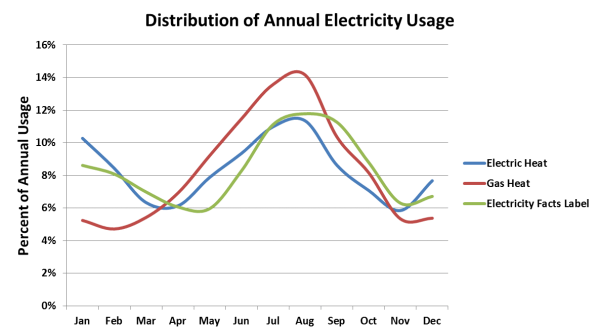Texas electricity usage patterns. Whether we are online, watching our favorite program, or listening to the radio, we receive an endless stream of marketing messages and advertisements. Knowledge is power when shopping for goods and services. Whether we are buying an appliance or looking for an electrician, doing research helps us make the best decision. Finding the best Texas electricity plan for your home is no different. Information is the key to choosing the right electric provider and best plan for your home.
Knowing your monthly usage pattern is important when selecting an electricity plan. Your electricity usage pattern is unique as your fingerprint. It reflects your individual lifestyle and preferences. There are some generalizations, however, that are useful in selecting a rate plan. For example, how you heat your home significantly affects your energy usage pattern throughout the year.
Gas or Electric Heat
Texas homes heated with natural gas or propane generally have low electricity usage during winter months. Their annual electricity usage is concentrated in the summer months when they rely on electricity for cooling. Homes with electric heat (typically heat pumps) have an electric usage pattern spread much more evenly throughout the year.
The graph above shows that homes with electric heating have a summer usage peak and a somewhat smaller winter peak. Homes with gas heat have only a summer peak. This graph does not reflect how much electricity a home uses. On the contrary, it simply shows how the monthly usage differs for each type of home.
The Public Utility Commission of Texas specifies a usage pattern for electricity providers to use in their Electricity Facts Label (EFL). This standardizes how electricity providers reflect delivery charges in their average price calculations. As shown in the above graph, the EFL standard usage pattern is more heavily weighted to homes with electric heat. This reflects the large number of heat pumps in Texas homes.
Tiered Electricity Rates
There are two ways that your electricity usage pattern should influence your selection of an electricity plan. The first involves tiered pricing. Some electricity providers offer tiered rates or incentives that only apply to usage within a certain kWh range. For example, a plan may offer a bill credit only if your monthly usage falls between 1000 and 2000 kWh. Another plan may include a fixed charge if monthly usage is below a certain number of kWh.
These plans may be a challenge to evaluate for customers using gas heat. As shown in the graph, customers using gas heat typically have a broad range of usage from month to month. An electricity offer that makes sense in the most of the year may not look so good in the summer. A home with electric heat, however, typically has less variation in usage. Therefore, if you have electric heat, it might be easier to evaluate plans with tiered pricing or usage-based incentives.
Seasonal Electricity Plans
Another way that usage patterns influence your selection of an electricity plan is the plan term. Most customers select fixed price electricity plans with annual terms. These are plans with terms of 12, 24, and 36 months. However, some customers prefer electricity plans with odd terms such as 6, 9, 14, or 18 months. When considering one of these terms, be sure to consider your usage pattern.
You should view fixed rate electricity plans as price protection. Consider odd term electricity plans from the perspective of when they provide protection. For example, a home with gas heat uses most of its annual electricity in the summer cooling months. Choosing an electricity plan with a term that does not cover the summer can be risky. A customer with electric heat needs to lock in price protection that covers both summer and winter months. Enrolling in consecutive 6-month electricity plans is not necessarily a bad strategy. The point is to be careful about being on a month-to-month rate when your usage and, therefore, your risk are highest.



